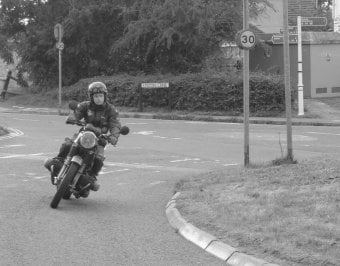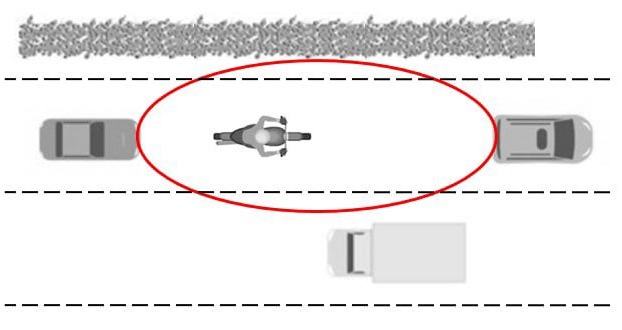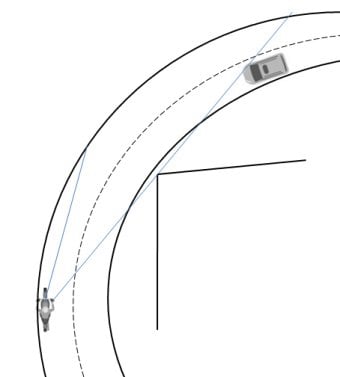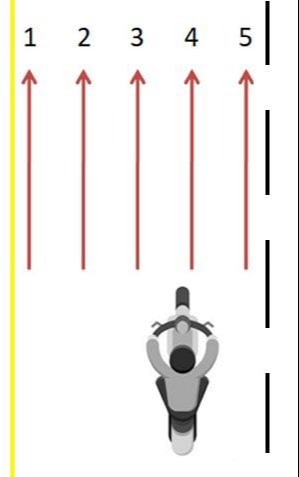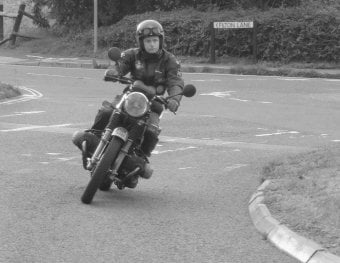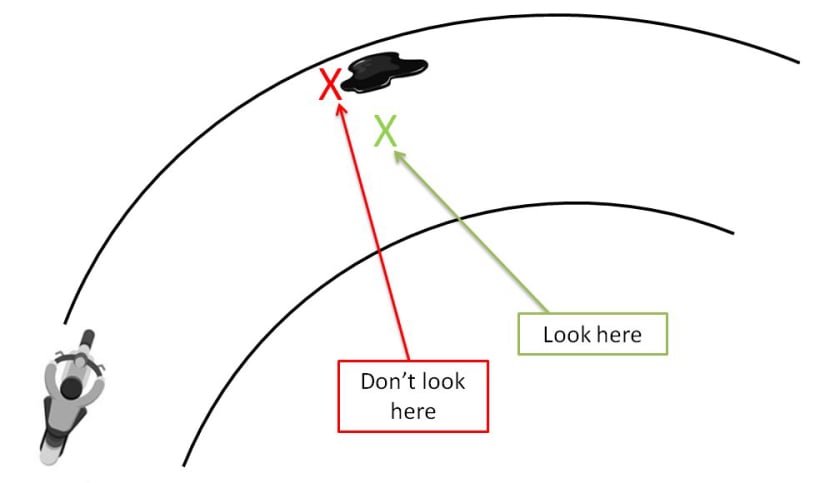More on road position.
A standard road lane is 12ft wide so motorcycle position can vary greatly. One way to chose the best lane position is to think of it in 5 zones as shown on the left.
The default riding position would be around position 4, towards the crown of the road. This gives a good view ahead and allows a view into junctions and driveways, whilst not being too close to oncoming traffic.
Position 5 would be used prior to an overtake to get the best view forwards and possibly also on the approach to a left hand bend to see round the corner.
Position 3 can have hazards such as drain covers and oil, but it can also be the first place a dry line appears after rain; use it if it makes sense.
Position 2 is a nice place to be, and a useful position when there is lots of oncoming traffic. This position is also valuable when slow oncoming traffic is observed. Faster vehicles may be looking to overtake and they will see a rider in position 2 sooner than a rider near the crown of the road.
Position 1 has to be used with caution because road debris can collect here but it gives the best view around right hand bends,
Be aware than when in position 1 and 2 some following drivers may see it as an invitation to overtake and squeeze passed, so you should ride more defensively if the driver behind is pushing.
One IAM tutor said to me.......
"If you replay a ride in your mind, you should be able, at any point, to explain why your road position is where it is. If you can't then you're day dreaming. At any instant your road position should be calculated based on all the information you have including road condition and direction, signposts, other road users, hazards, weather, line of sight, etc...."
